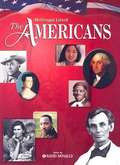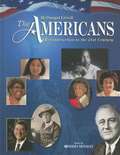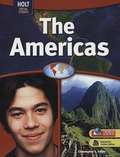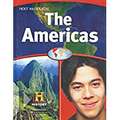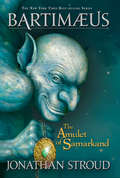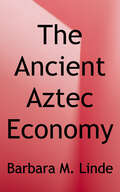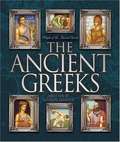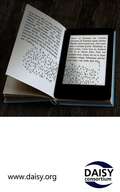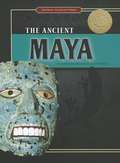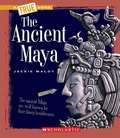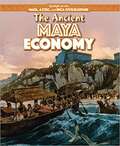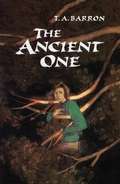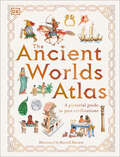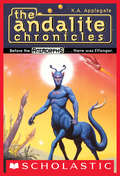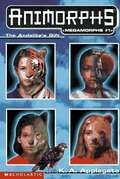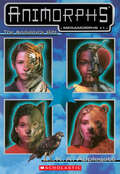- Table View
- List View
The Americans
by Louis E. Wilson J. Jorge Klor de Alva Gerald A. Danzer Nancy WolochThis textbook contains unit lessons on: American Beginnings to 1783, 1781-1850 A New Nation, 1825-1877 An Era of Growth and Disunion, 1876-1917 Migration and Industrialization Change Society, 1890-1920 Modern America Emerges, 1920-1940 The Twenties and the Great Depression, 1931-1960 World War II and Its Aftermath, 1954-1975 Living with Great Turmoil, and 1968-1996 Nearing the Century Mark.
The Americans
by Louis E. Wilson J. Jorge Klor de Alva Larry S. Krieger Gerald A. Danzer Nancy WolochThis textbook on "The Americans" narrates the history of Americans from Beginnings to Passage to a New Century.
The Americans: Reconstruction Through the 20th Century
by Louis E. Wilson J. Jorge Klor de Alva Larry S. Krieger Gerald A. Danzer Nancy WolochYou live in a nation founded on dreams of freedom, opportunity, and progress. The most enduring of these visions is the American dream--the belief held by most Americans that if they work hard and play by the rules, then they and their children will be better off.
The Americans: Reconstruction to the 21st Century
by Louis E. Wilson J. Jorge Klor de Alva Larry S. Krieger Gerald A. Danzer Nancy WolochThe Americans focuses on nine themes, described on these pages. As you study U.S. history, you will encounter these and other themes again and again. The Thematic Review on pages 192-197 and the Tracing Themes features organize major events in United States history around these themes.
The Americans: Reconstruction to the 21st Century
by Louis E. Wilson J. Jorge Klor de Alva Larry S. Krieger Gerald A. Danzer Nancy WolochThis is more of a story of the United State laid out in different themes. These themes include: America in world affairs, economic opportunity, science & technology, diversity & the national identity, women & political power, immigration & migration, rights etc
The Amulet of Samarkand (A Bartimaeus Novel #1)
by Jonathan StroudNathaniel is a magician's apprentice, taking his first lessons in the arts of magic. But when a devious hot-shot wizard named Simon Lovelace ruthlessly humiliates Nathaniel in front of his elders, Nathaniel decides to kick up his education a few notches and show Lovelace who's boss. With revenge on his mind, he summons the powerful djinni, Bartimaeus. But summoning Bartimaeus and controlling him are two different things entirely, and when Nathaniel sends the djinni out to steal Lovelace's greatest treasure, the Amulet of Samarkand, he finds himself caught up in a whirlwind of magical espionage, murder, and rebellion.
The Ancient Americas: 30,000 B. C.- A. D. 1600
by Nextext Staff McDougal-Littell Publishing StaffNIMAC-sourced textbook
The Ancient Aztec Economy (Spotlight on the Maya, Aztec, and Inca Civilizations Series)
by Barbara M. LindeWhen most people think of the word "economy," they think of stock markets and modern banks. However, even ancient civilizations had their own economies. Readers discover fun and fascinating facts about the ancient Aztec economy through informative text designed to support social studies curricula. Detailed photographs and historical images, such as primary sources, are included to enhance the text and keep readers engaged as they learn. <p><p>Economics and history come together in an amazing way to ensure readers gain a comprehensive understanding of the ancient Aztec economy.
The Ancient Celtic Festivals: and How We Celebrate Them Today
by Clare Walker Leslie Frank E. GeraceTravel 2,500 years back in time to find out where many of our modern holiday traditions originated. • Charming full-color ink and watercolor illustrations throughout. • This valuable resource for teachers and parents uses hands-on activities, natural science facts, and observations to explore the concepts of measuring time, making calendars, and marking seasonal celebrations. • Shows how our popular holiday traditions are rooted in nature, beginning as the seasonal festivals of an ancient society. Children love holiday celebrations but most don't know why they wear masks on Halloween or watch for the groundhog on February 2. Now they can discover that many of our modern traditions started with the festivals of the ancient Celts. The Celts were farming people, so their festivals marked the important events of the agricultural year. Imbolc, in very early spring, celebrated the birth of new lambs, while Samhain, in late fall, celebrated the end of the growing season and the beginning of winter. If we look at our modern calendar, we'll find Groundhog Day falling where Imbolc did, Halloween where the Celts celebrated Samhain, and a host of other holiday correspondences. That's because descendants of the Celts were among the first Europeans to settle in the New World, bringing their holiday traditions with them. In a world of electric lights and store-bought foods, The Ancient Celtic Festivals can help children make the connections to nature that their ancestors did. Whimsically illustrated activity pages invite them to bake a harvest corn bread, stage a spring festival, or warm up the cold depths of winter with hot spiced cider. Teachers, librarians, parents, and children alike will welcome this book as a fun-filled resource.
The Ancient Egyptians
by Rosemary ReesShows how people lived in ancient Egypt by describing their social, economic, political, and cultural life, and explains how their values and attitudes have helped shape our world
The Ancient Greeks (People of the Ancient World Series)
by Allison LassieurAn engaging text that presents the civilization of ancient Greece, discussing aspects of daily life, religion, and entertainment; and reviews some of the contributions that Greeks made to later civilizations.
The Ancient Inca Economy (Spotlight On The Maya, Aztec, And Inca Civilizations Ser.)
by Sarah MachajewskiThe ancient Inca civilization is known having a developed economy, but the people didn’t use money. In fact, the society didn’t have it. This is just one fact presented in this volume, which provides an in-depth look at the Inca economy. The title covers terrace farming, irrigation, livestock, and the role of mit’a labor in ancient Peru. Through the text’s coverage of the government’s distribution of goods and services, readers will understand why the society is sometimes called a utopia. Written with age-appropriate language and accompanied by highly detailed images, this title makes classroom social studies concepts accessible for readers.
The Ancient Maya (Exploring the Ancient World)
by Jennifer Fretland VanVoorstThe civilization of the ancient Maya reached its peak about 2,000 years ago. The Maya held a complex religious view of the world. In an effort to maintain order by pleasing their many gods, they built imposing stone temples, developed a written language, and played a ball game with life-or-death consequences.
The Ancient Maya (True Books)
by Jackie MaloyCovers the history and archeology of Central America in general and about the fascinating Maya people.
The Ancient Maya Economy (Spotlight on the Maya, Aztec, and Inca Civilizations)
by Janey LevyWhat drove the Maya economy? What kinds of goods did people create and trade? Readers gain insight into these questions and more as they explore ancient Maya economic systems. This book provides archaeological evidence about the goods and services that existed in the Maya civilization through primary sources. Photographs of artifacts and ruins, paired with artwork and engaging text, provide readers with a well-rounded understanding of this ancient yet advanced economy.
The Ancient One (Adventures of Kate #2)
by T. A. BarronWhen Kate travels to Blade, Oregon, for a quiet week at Aunt Melanie's cottage, her plans are dashed by the discovery of a grove of giant redwood trees in nearby Lost Crater. For thousands of years, no humans have entered the fog-filled crater--except possibly the Halami people, who lived in the region centuries ago before vanishing without a trace. Long a source of deep mystery, the crater is now a source of conflict, pitting those who see it as the dying mill town's last hope against those who see it as a rare sanctuary that should be protected.<P> Caught up in this struggle, Kate follows an old Halami trail into the crater, and suddenly is thrown back in time five hundred years. Accompanied by the trickster Kandeldandel, the loyal Laioni, and the young logger Jody, she meets strange and enigmatic creatures, none more frightening than the volcanic Gashra, bent on destroying everything he cannot control. To defeat him, Kate must find the answer to an ancient riddle--and the courage to make the most difficult choice of her life.<P> In this extraordinary quest, combining high adventure and heroic drama, a girl discovers that all living things are connected in ways she never expected, and that true friendship can reach across cultures, and even across centuries.
The Ancient Worlds Atlas (DK Pictorial Atlases)
by DKFrom the first cities of Sumer to the empire of the Incas, travel around the world and through 5,000 years of history in this illustrated guide to see where and how ancient peoples lived.From North America to New Zealand, this book takes you on a trip around the world and through history to visit ancient cities and empires, showing who lived where and explaining the unique features of each civilization.The Ancient Worlds Atlas is a pictorial guide to past civilizations, covering big history topics for curious kids aged 9-12 years. What was it like to live in the crowded city of Rome? Why did the Egyptians build pyramids? When did Samurai warriors first ride into battle? How did sailors first navigate the Pacific Ocean? Which Chinese emperor has a palace with 1,000 bedrooms? Find out the answers to these fascinating questions and much more in this lavishly illustrated guide to past civilizations. This fascinating children&’s book about ancient civilizations contains: - A visual guide to where our forebears lived, putting their lifestyles into context of where they lived and at what time.- An engaging, fact-packed, and educational book for children - especially those interested in history, ethnography, archaeology, and classics.- A timeline at the end of the book which traces the major events, battles, people, and inventions covered in the guide.- A stunning, retro illustration style combined with modern fonts that creates a fun and unique approach to this topic.Russell Barnett&’s hand-drawn illustrations literally put the past on map, showing where and why the world&’s great cities grew and how archaeological evidence has provided clues to the past. With stunning illustrations throughout, this large format book makes an appealing gift for young historians that will take pride of place on any bookshelf.
The Andalite Chronicles (Animorphs)
by K. A. ApplegateElfangor-Sirinial-Shamtul is an Andalite war prince--the one who gave the Animorphs the power to morph. "The Andalite Chronicles" is the story of how this warrior-cadet ended up on planet Earth Ages 9-12. Pub: 12/97.
The Andalite's Gift (Animorphs Megamorphs #1)
by K. A. ApplegateWe never should have done it. But we needed a break, time off from the superhero stuff, a chance to act like normal kids. But now Rachel is missing and something's after us...
The Andalite's Gift (Animorphs Megamorphs #1)
by K. A. ApplegateWe never should have done it. But we needed a break. Some time off from the superhero stuff. A chance to act like normal kids. Well - as normal as four kids who can morph into animals, a boy trapped in a hawk's body, and a bright blue alien can be. Everything should have been cool.Now Rachel is missing. And there's this... this thing that's after us. But it's not up to me to tell the whole story. Tobias, Cassie, Marco, and Ax were there, too. Even Rachel has some info to add. So go ahead and check this out. And remember not to tell anyone what we're about to tell you. It could mean the difference between life and death. Or worse...

